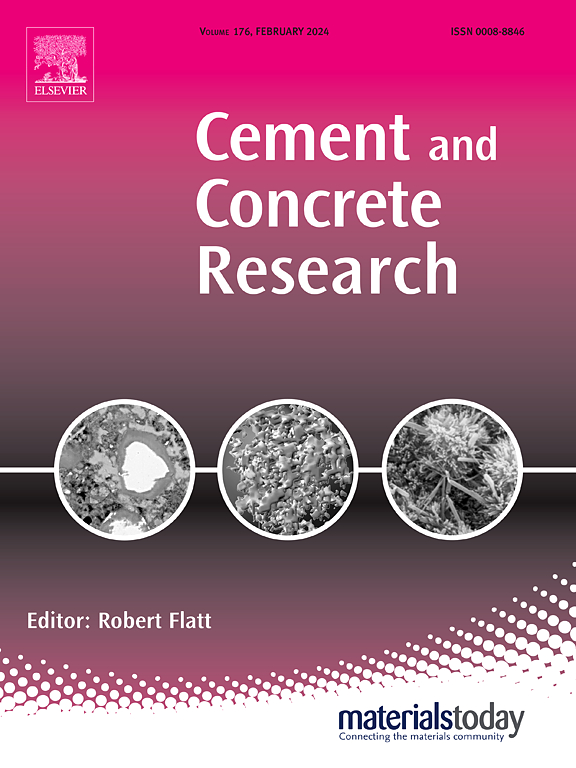Autogenous shrinkage mitigation effect of superabsorbent polymers on alkali-activated GGBFS-FA binary binder without additional water: performance, microstructure and mechanism
IF 13.1
1区 工程技术
Q1 CONSTRUCTION & BUILDING TECHNOLOGY
引用次数: 0
Abstract
This work seeks to explore the mechanisms of superabsorbent polymers (SAP) in mitigating autogenous shrinkage of an alkali-activated ground granulated blast furnace slag-fly ash (GGBFS-FA) binary binder through elaborate microstructural analysis. The effect patterns of SAP with different dosages (0–0.5 %) and particle sizes (91–631 μm) on the setting time, workability, mechanical strength and autogenous shrinkage were tested. Porosity, pore size distribution, specific surface area, and chemical characteristics were systematically explored. Results revealed that 0.5 % SAP interrupted capillary stress through pore coarsening, thereby reducing autogenous shrinkage by 80 % (3266.57 to 637.89 με). Smaller SAP particle (91 μm) enhanced water release efficiency and promoted calcium silicoaluminate hydrate (C-(A)-S-H) gel formation, while larger SAP particle (631 μm) delayed water release and improved strength with slower shrinkage stabilization. The findings on the water release characteristics and pore coarsening mechanism of SAP deepen our understanding of autogenous shrinkage controls in alkali-activated materials (AAM).不加水的高吸水性聚合物对碱活化GGBFS-FA二元粘结剂的自收缩减缓作用:性能、微观结构及机理
本研究旨在通过详细的微观结构分析,探索高吸水性聚合物(SAP)在减轻碱活性粉状高炉渣-粉煤灰(GGBFS-FA)二元粘结剂自收缩中的作用机制。考察了SAP添加量(0 ~ 0.5%)和粒径(91 ~ 631 μm)对凝固时间、和易性、机械强度和自收缩的影响规律。系统地探讨了孔隙度、孔径分布、比表面积和化学特性。结果表明,0.5% SAP通过孔隙粗化打断毛管应力,使自收缩率降低80% (3266.57 ~ 637.89 με)。较小的SAP颗粒(91 μm)提高了水的释放效率,促进了水合硅铝酸钙(C-(A)- s - h)凝胶的形成,而较大的SAP颗粒(631 μm)延迟了水的释放,提高了强度,收缩稳定速度较慢。碱活化材料的释水特性和孔隙粗化机理的研究结果加深了我们对碱活化材料(AAM)自收缩控制的认识。
本文章由计算机程序翻译,如有差异,请以英文原文为准。
求助全文
约1分钟内获得全文
求助全文
来源期刊

Cement and Concrete Research
工程技术-材料科学:综合
CiteScore
20.90
自引率
12.30%
发文量
318
审稿时长
53 days
期刊介绍:
Cement and Concrete Research is dedicated to publishing top-notch research on the materials science and engineering of cement, cement composites, mortars, concrete, and related materials incorporating cement or other mineral binders. The journal prioritizes reporting significant findings in research on the properties and performance of cementitious materials. It also covers novel experimental techniques, the latest analytical and modeling methods, examination and diagnosis of actual cement and concrete structures, and the exploration of potential improvements in materials.
 求助内容:
求助内容: 应助结果提醒方式:
应助结果提醒方式:


